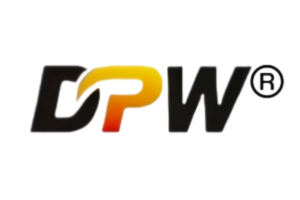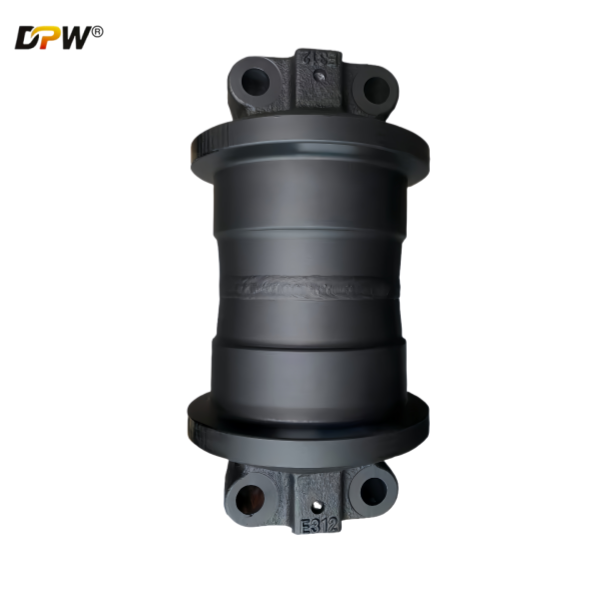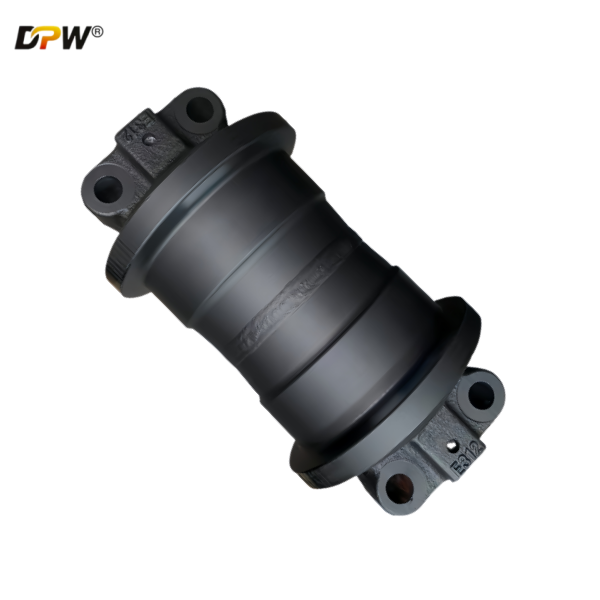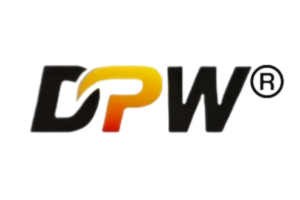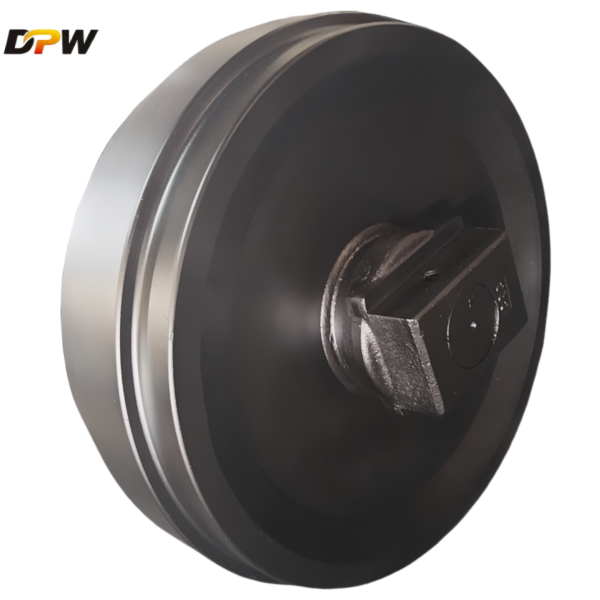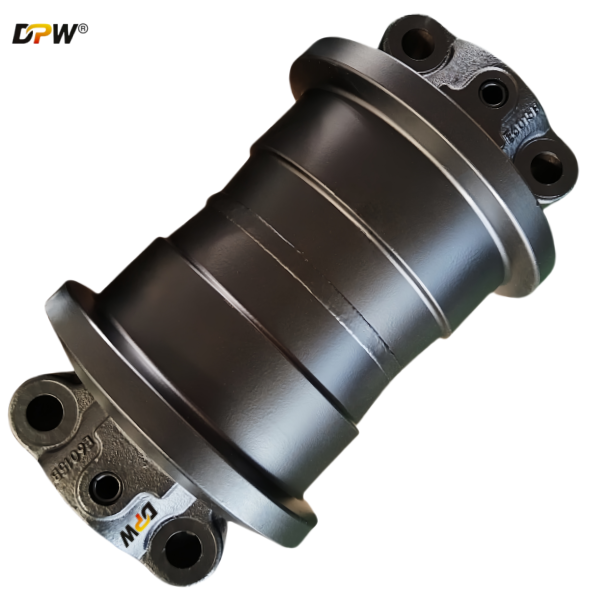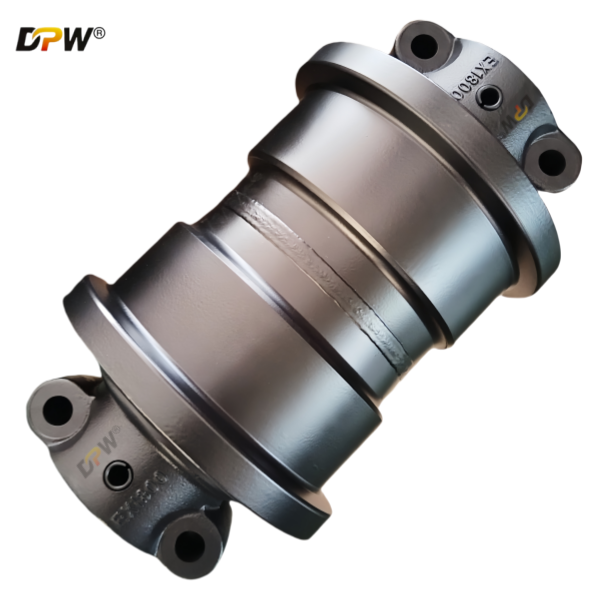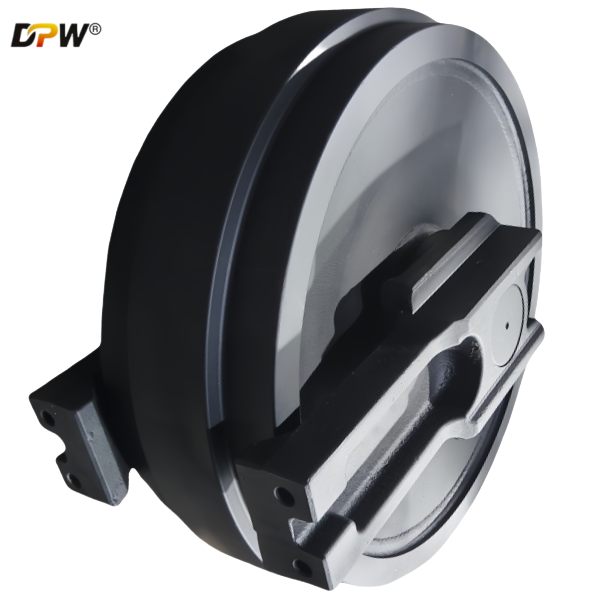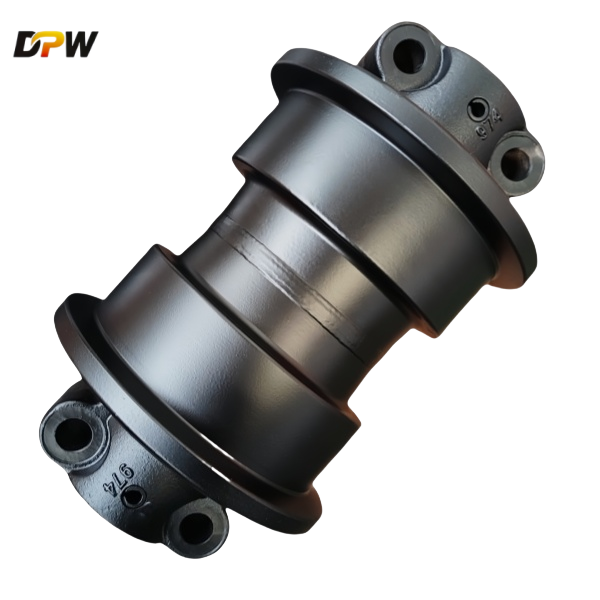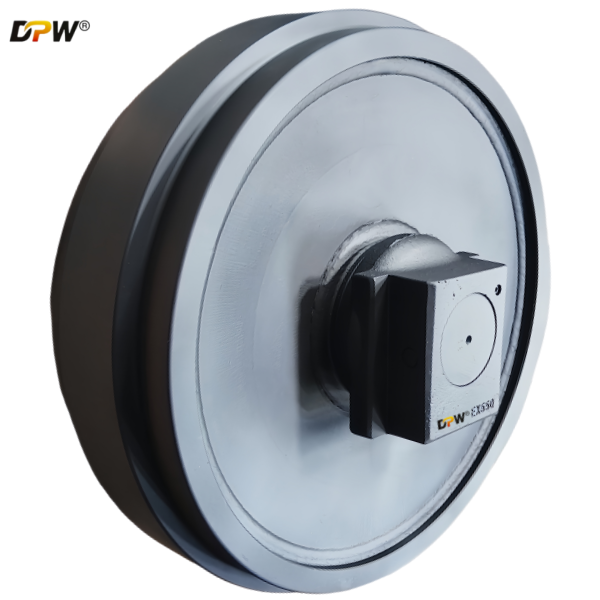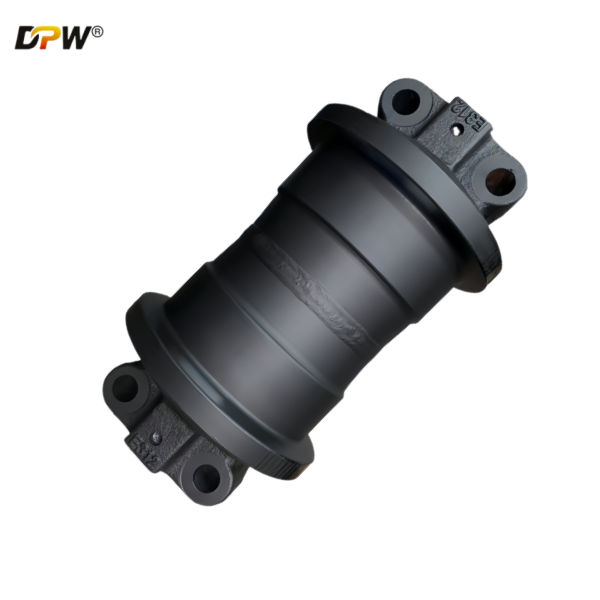
CAT CR5108 E312/E120B/E311/E313/E314 Track Roller Assy/Crawler chassis components manufacturer based in China
Product Specifications
In a crawler excavator like the Cat E312 or E120B, the track roller assembly (often just called a "track roller" or "bottom roller") is a critical component of the undercarriage. Its primary functions are:
Support the Machine's Weight: The rollers carry the weight of the excavator on the bottom section of the track chain.
Guide the Track Chain: They maintain the alignment of the track chain, preventing it from derailing.
Reduce Friction: They contain internal bearings that allow them to spin freely as the track moves, minimizing friction and wear on the track links and pads.
A single undercarriage side will have multiple track rollers. A failure in one can lead to rapid damage to the track chain, links, sprockets, and other rollers.
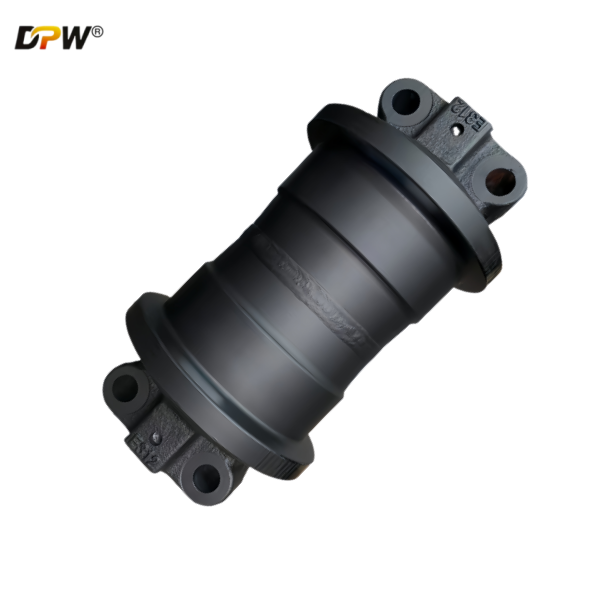
2. Application for Cat E312 and E120B Excavators
The Caterpillar E312 (an older model) and E120B are both medium-sized excavators. It is common for the same undercarriage components to be used across different models if the weight and dimensions are similar.
Important Note: While many undercarriage parts are shared, you must always verify the correct part number for your specific machine serial number. Undercarriage configurations can vary based on the shoe width and specific build options.
3. Common Part Numbers and Descriptions
Caterpillar parts are often sold as individual components (roller, bolt, seal kit) or as complete assemblies.
| Part Type | Common Cat® Part Number | Description |
|---|---|---|
| Complete Track Roller Assembly | 151-9747 | A fully assembled and sealed unit, ready to install. This is the most common part number for a complete replacement roller for these models. |
| 417346 | Another common assembly number. The correct one depends on your machine's serial number. | |
| Track Roller (Bare Part) | 861934 | The roller body itself, without seals, bearings, or bolts. Used for rebuilding. |
| Rebuild Kit (Seal Kit) | 110-4741 | Contains all the necessary seals, O-rings, and gaskets required to rebuild a worn roller. |
| Bolt | 6I-0508 | The special bolt that secures the roller assembly to the track frame. |
4. How to Find the EXACT Part Number for Your Machine
Check the Machine's Serial Number (S/N): This is the most crucial step. It is located on the machine's main frame.
Use the Cat Parts Online Website:
Go to the official dpwparts website.
Enter your machine's serial number.
Navigate to the "Undercarriage" section, then to "Track Roller Group." This will show you the exact illustrated breakdown and part numbers for your specific configuration.
Contact Your Local Cat Dealer: A dealer parts representative can look up the correct part number instantly using your serial number. This is the most reliable method.
5. Common Problems and Failure Symptoms
Track rollers are subject to extreme stress and wear. Common failure signs include:
Visible Flange Wear: The flanges (the raised edges on the roller) become thin, sharp, or uneven. This can cause the track to derail.
Leaking Grease: If the internal seals fail, grease will leak out and contaminate the track. You'll see clumps of grease and dirt on the roller and track.
Failed Bearing: A seized or grinding roller will not turn. This causes rapid, severe wear on the track chain links and consumes more horsepower, straining the final drives.
Excessive Noise: A rumbling or grinding noise from the undercarriage when the machine is moving is a classic sign of a failing roller bearing.
Flat Spots: If a roller stops turning while the machine moves, it will develop a flat spot, creating a loud "clunking" sound with each revolution.
6. Replacement and Sourcing Options
When replacing a track roller assembly, you have three main choices:
Genuine Cat® Parts:
Pros: Guaranteed to fit and perform to OEM specifications. Highest quality and backed by warranty.
Cons: Highest cost.
CAT Remanufactured Parts:
Pros: A cost-effective alternative from Caterpillar. Core is professionally rebuilt to like-new condition with a solid warranty.
Cons: Slightly lower cost than new, but higher than aftermarket.
Aftermarket/Will-Fit Parts:
Pros: Significantly lower initial cost. Many quality manufacturers (e.g., Berco, ITR, Vema) produce reliable undercarriage parts.
Cons: Quality can be inconsistent between brands. May not have the same service life as genuine parts. Ensure you are buying from a reputable supplier.
Recommendation
Before purchasing, always:
Confirm your machine's serial number.
Compare the physical dimensions (bore size, flange height, overall width) of the old and new roller.
Consider replacing multiple worn rollers at the same time to ensure even wear and performance across the undercarriage.
If you provide the specific serial number of your machine, a more precise part number can be identified.
